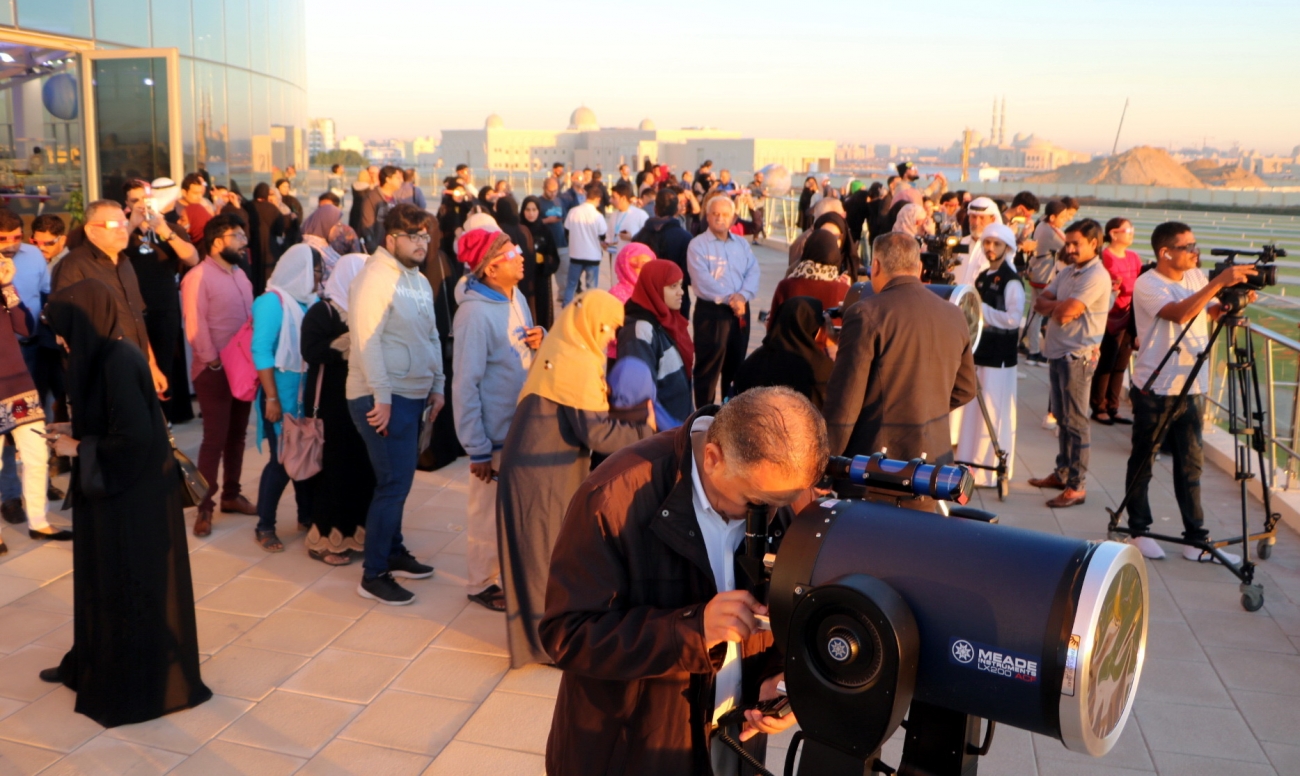SAASST is keen to use the latest devices of the Academy and the Sharjah Observatory, as the Academy Founder His Highness Sheikh Dr. Sultan bin Muhammad Al Qasimi, Member of the Supreme Council, Ruler of Sharjah and President of the University of Sharjah, established it as a national development project that supports the UAE space sector with its research projects and the development of space technologies aimed at serving the community by spreading knowledge in these fields, and simplifying the scientific process for students and amateurs of space and astronomy. The Academy welcomes visitors twice every month in the Sharjah Observatory to witness such astronomical phenomena and to monitor various celestial bodies such as planets and stars. The eclipse was observed in the presence of a large number of students, researchers, and space and astronomy enthusiasts who watched it using special telescopes, binoculars, and glasses.
The Partial Solar Eclipse began in Sharjah from sunrise at 7:01, but for those who live in the Liwa region (south of Abu Dhabi), the solar eclipse was annular. An eclipse occurs when the Moon’s shadow falls on Earth, that is when the moon covers the Sun’s disk. The reason is that the Moon and the Sun have the same angular diameter from Earth. If the Moon covers the entire disk of the Sun, we will see a total eclipse. If it only covers part of the Sun, we see a partial or annular eclipse. The peak of the partial eclipse was at 07:38 and the phenomenon ended at 08:54, meaning that the eclipse lasted for approximately an hour and 53 minutes. Several telescopes with special filters were used to protect viewers from the danger of sunlight, and the Academy also distributed free sunglasses to all visitors.
In its endeavor to achieve His Highness’s vision of paying attention to scientific research that serves the development of society, the Academy is one of the most comprehensive centers in the country and the region covering the fields of education and scientific research in space science, astronomy and technology; organizing workshops, lectures, seminars and conferences that benefit professionals and amateurs in this field alike; and focusing on public awareness through astronomical planetarium shows, space exhibitions, and summer camps. The Academy is also working on plans to expand space and astronomy education and research programs by offering Master’s and Ph.D. programs such as the Master's program in Space Sciences and Astronomy, as well as building a new observatory in the Maliha area. This makes SAASST an ideal hub for effective scientific research and projects at space science and astronomy.



